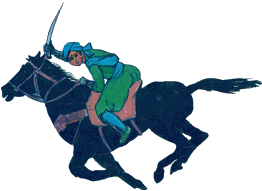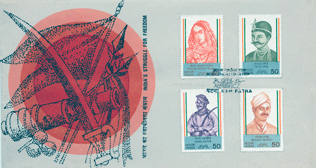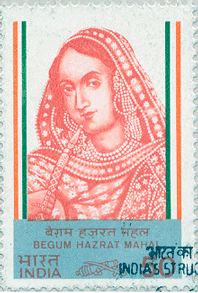Of the very large number of freedom fighters, who led the struggle, four are being commemorated through the present series, which is a part of the larger series on India's Struggle for Freedom.
Wife of Nawab Wajid Ali Shah of Lucknow, Uttar Pradesh, Hazrat Mahal was also known as the Begum of Avadh. In addition to being gifted with irresistible physical charm, she had an inborn genius for organization and command. After her husband had been sent away in exile to Calcutta, she with the cooperation of a zealous band of supporters, like Sarafad-daulah, Maharaj Bal Krishna, Raja Jai Lal and above all Mammon Khan worked incessantly to revive the fortunes of Avadh. She seized control of Lucknow in association with the revolutionary forces and set up her son, Prince Birjis Qadr, as the King of Avadh. Hazrat Mahal worked in association with Nana Saheb but later escaped from Lucknow and joined the Maulvi of Faizabad in the attack on Shahjahanpur.
She was driven from pillar to post, but she made her retreat with fortitude. She rejected with contempt the promises of allowance and status held out to her by the British against whom her hatred was unrelenting.
In the end after bearing misfortune and misery throughout the period of resistance, she found asylum in Nepal where she died in 1879.




